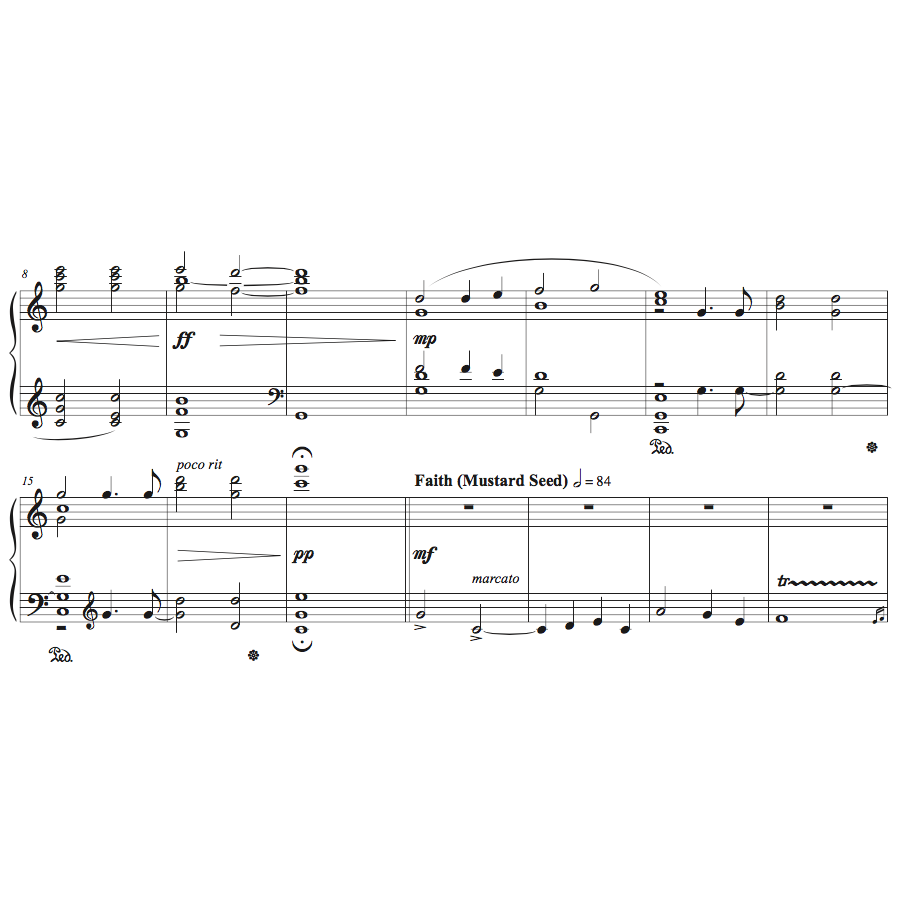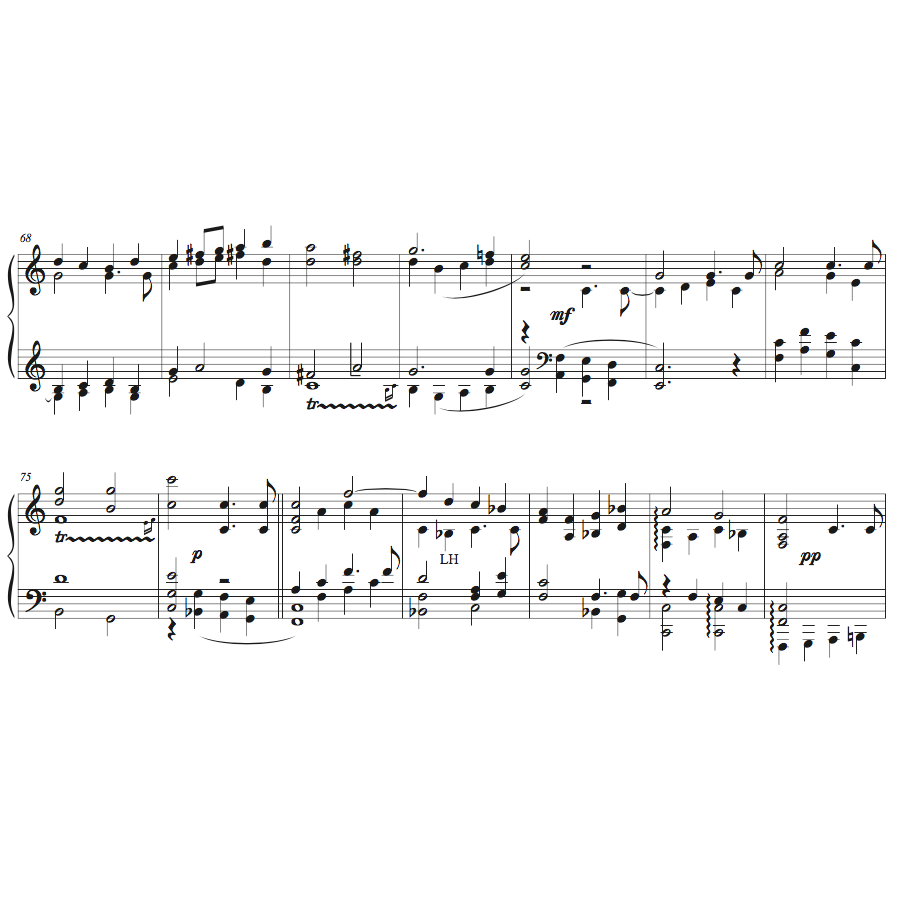Your cart is currently empty!
Showcase: Faith in the Lord Jesus Christ
“Faith in the Lord Jesus Christ” is the first movement of a programatic piano sonata in progress, which will be called “The Fourth Article of Faith.” Each movement will represent each of the first four principles and ordinances:
- Faith in the Lord Jesus Christ (finished and ready for sale)
- Repentance (currently being composed)
- Baptism
- Gift of the Holy Ghost (a page of notes already exists)
This first movement opens with the statement of the “Jesus Christ” Theme, a majestic open fifth trumpet-like fanfare.
Then to represent Faith, I went with a fugue. It starts with a simple Mustard Seed, which you can see at the end of the excerpt below. The perfect fifth at the beginning of the theme is to remind that this Faith is based on Christ.
As more voices come in, the Mustard Seed grows into a full-fledged four-voice fugue.

In the very middle, at the marking “Remembering Christ,” the Jesus Christ theme returns.
At “Faith in Christ,” the fugue returns, but this time with pieces of the Jesus Christ theme incorporated (fourths and fifths with the dotted quarter – eighth note rhythms). You can see some of this in the excerpt below.

At the very end, the fugue comes to a finishing stretto — that is, all four voices take turns stating the Mustard Seed in a tight round. This represents a “more perfect knowledge.”
This piece was a finalist in the Annual LDS Music Submission contest.
The idea to compose a programatic religious piano sonata hit me almost twenty years ago while I was still in school. I had finished the first movement quickly, but then came graduation and getting a job, and I had to set aside most of my composing activities. Now I have come back to finish what I had started.
Practice and Performance Tips:
This piece is somewhere between intermediate and difficult. It’s meant to be like a Bach fugue (though not as difficult), mixed with some more modern motifs.
The fingering can get tricky, so I suggest figuring them out and writing them down on the more difficult passages.
There are several ninths throughout the whole piece, that is, stretches of a third plus an octave. Even I have difficulty reaching them all. It’s okay to roll chords if you can’t reach. In some cases, you may be able to omit some of the inner notes. (For example, in the second excerpt above, just under the poco a poco accel., note the Bb and D in the third beat of the right hand. You can either roll the two notes, or omit the Bb entirely — but not the D — never the outside notes.)
On many of the trills, it may help to have the other hand pick up the other voice to allow better trilling. I call these staff crossings. (For example, in the second excerpt above, third measure from the top, in the left hand: you may use the right hand to play the A.) I tried to mark all cases where this would be helpful. There are other non-trill cases where it would also help to allow staff crossings.
For me, the hardest part is the stretto at the end (“A more perfect knowledge”). It has both ninth stretches and staff crossings.
This piece presents a nice challenge, but with a little bit of practice, you should be able to pull it off, and obtain a good sense of accomplishment.
Sound sample:
Bonus video from almost 10 years ago (not the best quality or performance):
by
Tags:

Leave a Reply